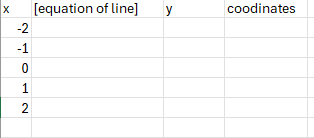Mathematics
We got 15 different topics to study for. So here's each one.
1: Pythagoras
a2 + b2 = c2
that's all
2: Trigonometry
sin, cos and tan.
SOH, CAH, TOA
hypotenuse: longest line
3: GST (%)
to add GST: x1.15
to remove GST: /1.15
note: / is divide
4: Exchange Rates
To convert from your currency into another: times the amount of money from your currency by the exchange rate
To convert back into your currency from another: divide the foreign currency amount by the exchange rate
examples!
If 1 NZD = 10.38 ZAR
1 ZAR = 0.096 NZD
to convert 150NZD to ZAR
150 NZD x 10.38 (exchange rate) = 1559 ZAR
to convert back the 1559 ZAR
1559 / 10.38 = 150
or 1559 x 0.096 = 150
numbers rounded cause cause
5: volume / surface area / area / perimeter
most of these will be given in the formula sheet
area is base x height
perimeter is the sides added up
note: GET THE BRACKETS RIGHT. DONT INSERT THEM WRONG.
6: geometry (angles in shapes)
not sure what that note means but I assume its some combination of trig and the area/perimeter/volume stuff
7: similar shapes (i got the numbering mixed up for 6 and 7 but shhh)
just remember how ratios work or something you'll probably be fine.
8: finding the equation of a line or parabola
NONONONONONONONONONO
Parabolas
the ways parabolas can be written
normal
y = ax2 + bx + c
useful solving equations and number patterns
root form
y = a(x-r1)(x-r2)
used when you have the roots of the parabola (x intercepts)
vertex form
y = a(x-p)2+q
how to use
check the points you have available
do you have the roots (x intercepts)?
do you have the vertex (bottom point)?
any other points?
If you have the vertex and another point, then you'll use the vertex form
If you have the roots and another point, then you'll the root form
If you have something else you did it wrong, check again
roots
y = a(x-r1)(x-r2)
1. substitute the roots
2. substitue the x and y with the other point.
3. simplify and calculate what a is (if you can't, you suck. try again
4. reform the equation so it looks normal without the x and y substituted
vertex
y = a(x-p)2+q
1. subtitue the p and q for the x and y points of the vertex. (p = x, q = y)
2. substitue the x and y points from the equation with the x and y points from the other point
3. simplify to find a
4. go back and reqrite the equation with substituting x and y
lines
1. Find 2 points
2. calculate the gradient using m = y2-y1 / x2-x1
3. substitue m (the gradient) into y-y1 = m(x-x1)
4. simplify y = ______
9: drawing graphs
use this chart to graph out each point individually

10: Number Patterns (quadratics)
expand fully and remember the 3 steps
2a =
3a + b =
a + b + c =
I'm probably the only person who will understand this lmao but it works
then just put the a b and c into the ax2 + bx + c
if it asks you to find the nth term then substitue x for n
10: Number Patterns (quadratics)
expand fully and remember the 3 steps
2a =
3a + b =
a + b + c =
I'm probably the only person who will understand this lmao but it works
then just put the a b and c into the ax2 + bx + c
if it asks you to find the nth term then substitue x for n
11: factorising
if you have a lovely quadratic equation, for example
x2 + 5x -24
you will want to expand it. this is how.
1. list all facts of the constant (in this case 24)
2. select the pair that would add or subtract to be the coeefficient (5x)
3. in this case the factors are 3 and 8 and you can put them together by tying a neat little bow around them like this.
(x-3)(x+5)
4. check if you want by expanding
12: expanding
its not that hard
13 and 14 are easy
15. simulataneous fucking equations
the bane of my existance
here are the steps apparantly (i could neither confirm nor deny the accuracy of these
1. write both equations in the same order
2. look for a variable with matching coefficiants
3. If not coefficients match, multiply an equation so they do
4. Decide if you will add or subtract
5. solve for the remaining variable
6. substitue it to find the other variable
check
and somehow that is all